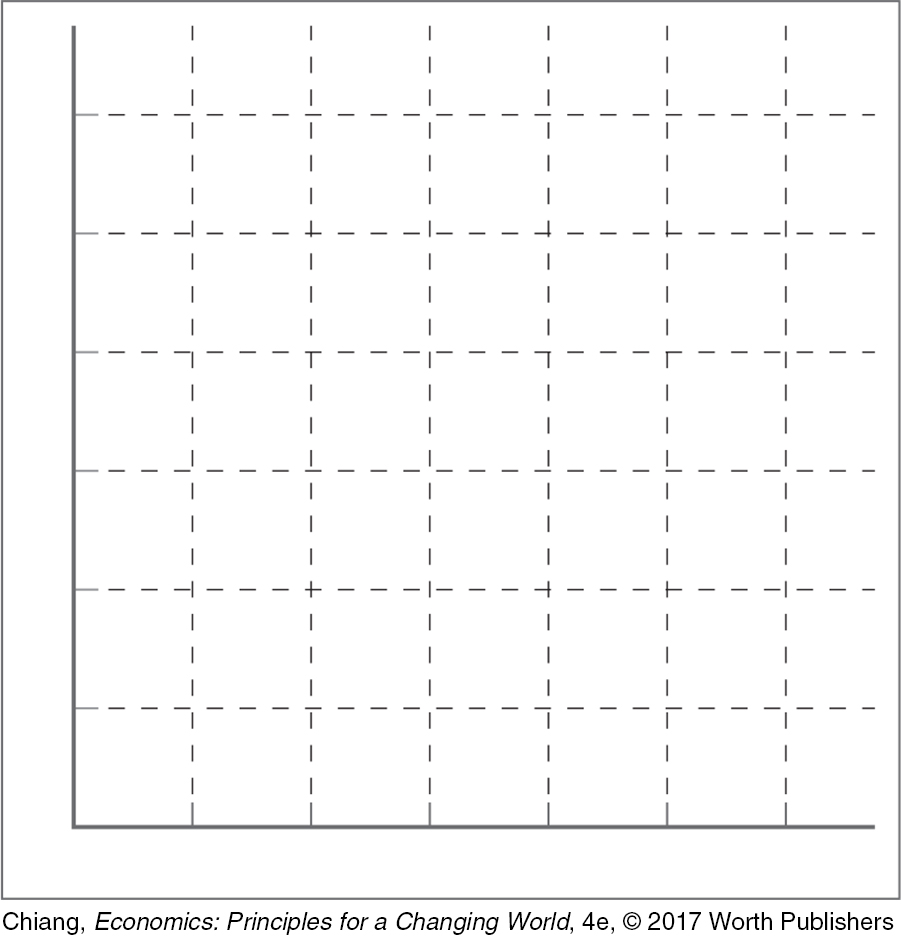QUESTIONS AND PROBLEMS
Check Your Understanding
Question 15.1
1. If you look at income distribution over the life cycle of a family, would it be more equally distributed than for one specific year?
Question 15.2
2. List some of the reasons why household incomes differ.
Question 15.3
3. How does the Gini coefficient differ from the Lorenz curve?
Question 15.4
4. Currently, the poverty threshold for a family of four is just over $24,000 a year. What does this amount take into account and not take into account?
Question 15.5
5. Are the poor in year 2017 just as poor as the poor in 1957? What has changed in 60 years to make poverty different today?
Question 15.6
6. What are the primary factors that lead to poverty?
Apply the Concepts
Question 15.7
7. Is there an efficiency–
Question 15.8
8. What do you think has been the impact on the distribution of income in the United States from the combined impact of the large number of unskilled illegal immigrants and the growing number of dual-
Question 15.9
9. It is probably fair to say that when we classify people as rich or poor at any given moment in time, we are simply describing similar people at different stages in life. Does this life cycle of income and wealth make the income distribution concerns a little less relevant? Why or why not?
Question 15.10
10. What would be the change in the distribution of income (Gini coefficient) if the United States decided to permit 10 million new immigrants into the United States who were highly skilled doctors, engineers, executives of large foreign firms, and wealthy foreigners who just want to migrate to the United States? How would the Gini coefficient change if, instead, the United States decided to permit 10 million unskilled foreign workers to enter?
Question 15.11
11. Roughly half of all marriages in the United States end in divorce. What is the impact of this divorce rate on the distribution of income and poverty?
Question 15.12
12. Poverty rates have declined for blacks and have been relatively stable for everyone else over the last 40 years. But the poverty rate still hovers near 15%. What makes it so difficult to reduce poverty below 10% to 15% of the population?
In the News
Question 15.13
13. In 2014, the Nobel Peace Prize went to Malala Yousafzai for her courage and action to expand educational opportunities for girls who were barred from going to school in their countries. She faced grave dangers in her activist role, including nearly being killed by the Taliban in her own nation of Pakistan. Her efforts led to countless children enjoying the freedom to go to school. Explain how her efforts to increase the number of young girls attending school will reduce poverty and result in a more peaceful planet.
421
Question 15.14
14. According to the U.S. Department of the Treasury, people in the top income quintile (20%) pay roughly 70% of all federal income taxes, with the remaining 80% paying less than 30%. Further, the bottom half of the population pays less than 10% of all taxes. Many politicians often assert that they want to bring tax relief (presumably with the idea of redistributing income) to “middle-
Solving Problems
WORK IT OUT  | interactive activity
| interactive activity
Question 15.15
15. Use the two different distributions of income in the table below to answer the questions that follow.
| Quintile | A | B |
| Poorest | 10.5 | 2.5 |
| Second | 13.2 | 6.8 |
| Middle | 21.6 | 13.9 |
| Fourth | 26.4 | 24.2 |
| Richest | 28.3 | 52.6 |
Use the grid below and graph the two Lorenz curves.
Which curve has a more equal distribution?
Are these distributions more or less equal than that for the United States today?

Question 15.16
16. The following households each have four persons. Their annual incomes are as follows:
| The Adams: | $22,100 |
| The Bensons: | $27,600 |
| The Bensons: | $27,600 |
| The Camachos: | $30,800 |
| The Davidsons: | $11,800 |
Assume that the poverty threshold for a household of four is $24,000. Calculate the income deficit, if any, and the income-
422
 USING THE NUMBERS
USING THE NUMBERS
Question 15.17
17. According to By the Numbers, over what period of time did the gap between the full-
Question 15.18
18. According to By the Numbers, about how many Americans used food stamps (now known as SNAP benefits) in the year 2000? How about in the year 2014? (Hint: Use the approximate U.S. population of 280 million in the year 2000 and 320 million in the year 2014.)